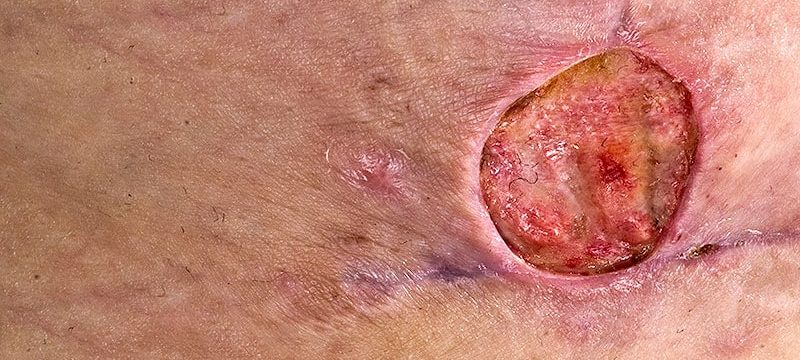TOPLINE:
A 2-point improvement in pain based on a numeric rating scale may indicate that patients are responding to treatment for pyoderma gangrenosum.
METHODOLOGY:
-
To help determine whether a patient with pyoderma gangrenosum is responding to treatment, researchers used a patient global assessment (PGA) score to establish a minimal important difference (MID) in the measure of pain.
-
The MID was analyzed as median change in pain associated with each magnitude of absolute change in PGA score in 43 patients from a pyoderma gangrenosum registry at Oregon Health & Science University from June 2021 to June 2022.
-
PGA was the anchor measure, a 5-point scale in which patients described their skin condition as clear, almost clear, mild, moderate, or severe. Other data obtained from the registry included ulcer characteristics, Investigator Global Assessment score, pain score based on an 11-point numeric rating scale (NRS), and use of prescription pain medications.
TAKEAWAY:
-
A mean of 30 weeks elapsed between patients’ first and most recent follow-up visits.
-
Initially, patients reported a mean pain score of 4 on the NRS, and 74% were prescribed pain medications.
-
A threshold of 2-point improvement in pain on the NRS showed optimal sensitivity (0.74) and specificity (0.84) for improvement in PGA score.
-
The researchers concluded that an improvement of 2 or more points in pain may indicate that a patient is responding to treatment.
IN PRACTICE:
The authors did not comment on the applications of their results in practice but wrote that an MID can help clinicians “determine whether a patient is responding to treatment” and that to their knowledge, “this is the first MID calculated for an ulcerative skin condition.”
SOURCE:
Alex G. Ortega-Loayza, MD, MCR, of the Department of Dermatology, Oregon Health & Science University, Portland, led the research. The study was published as a research letter in JAMA Dermatology.
LIMITATIONS:
Using a 5-point PGA to detect meaningful change may be limited compared with other scales. Other drawbacks were sample size, the potential for pain medications affecting pain scores independent of treatment response, and the potential for intrarater variance.
DISCLOSURES:
Ortega-Loayza reported receiving grants from Janssen, Pfizer, and Lilly and personal fees from Bristol Myers Squibb, Janssen, and Boehringer Ingelheim outside the submitted work. No other disclosures were reported.
For more news, follow Medscape on Facebook, X (formerly known as Twitter), Instagram, and YouTube
Source: Read Full Article
